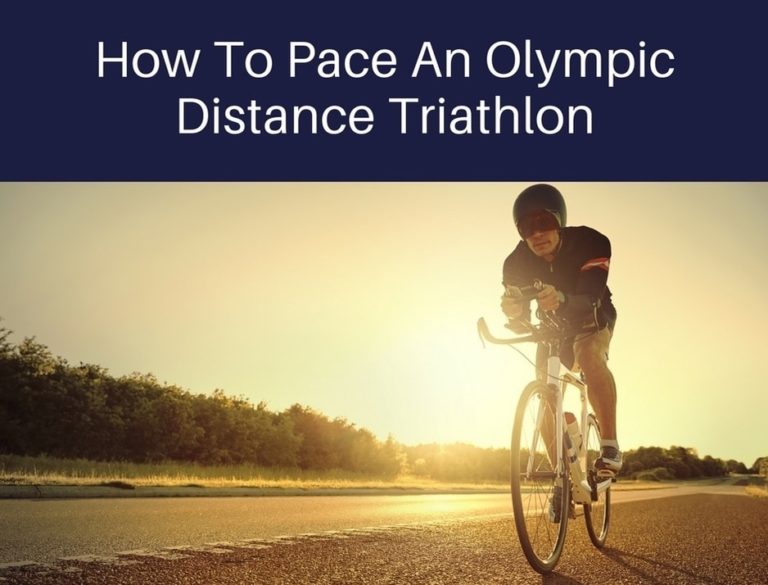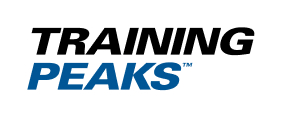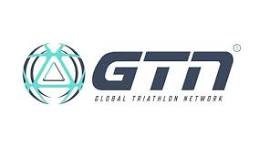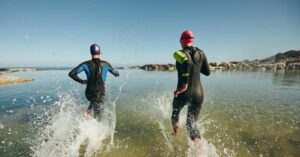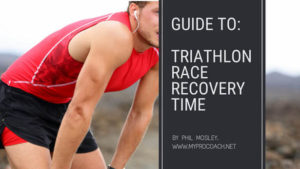Race faster every time, with these unmissable tips for pacing an Olympic Distance Triathlon.
If you want to race your best-ever Olympic distance triathlon, you need to plan your pacing strategy in advance. It’s not good enough to simply turn up on race day and “go as hard as you can”.
Such a strategy might work well for shorter events, but for an event lasting 2-3 hours, it won’t do you any favours. You’ll be the one who races well in the first half and then dies off.
If you pace your Olympic distance triathlon smartly, you’ll feel strong and fast throughout the entire event. You’ll be the one who overtakes people in the second half, rather than the one being overtaken. Essentially, the idea is to race at an even pace (with a few exceptions) throughout the 1500 swim, 40km ride and 10km run. In other words, you need to identify the best consistent pace you can hold for two or three hours.
Avoid the trap of viewing an Olympic triathlon as being like three separate races, because it isn’t. It’s one big continuous race – and that’s how you need to treat it when it comes to pacing. Forget about setting personal records in the individual disciplines, and simply aim for your best overall result.
Here’s how to approach each discipline and pace it smartly.
How To Pace Olympic Triathlon Swim (1500m)
During the first few minutes of the swim, you can find your place in the group and hopefully get in the draft zone of similar-level (or slightly faster) swimmers. After this ease back down to your target intensity and maintain that right through to the end of the swim. If you’re a nervous swimmer, start off steady and stay out of harm’s way.
There are several ways to pace yourself, including heart rate, pace and Rate of Perceived Exertion (RPE). However, from a practical point of view, using RPE (feel) works well – it saves you trying to look at your watch.
Check our Triathlon Race Pace Calculator to help guide your pacing strategy.
How To Pace Olympic Triathlon Bike (40km)
The bike section of an Olympic triathlon involves a 25-mile or 40-km cycle time trial. Think of it more like a 50-mile or 80-km time trial and you’ll be in the right ballpark in terms of pace judgement. Let’s be a little more specific about the numbers:
Use a power meter (if you have one) to pace yourself on the bike, with heart rate and RPE (feel) as backup measures. If you don’t have a power meter, just use heart rate and RPE instead.
Check our Triathlon Race Pace Calculator to help guide your pacing strategy. Smart pacing throughout the bike leg will reap rewards on the run. Maintain your energy levels by paying attention to your nutrition.
If you’re not sure what your Threshold Heart Rate or your Functional Threshold Power is, I’ll show you how to test for them below. If possible, use all three in this order of importance: 1. Power Output, 2. Heart Rate, Perceived Exertion.
How To Pace Olympic Triathlon Run (10km)
Given that an Olympic triathlon is a two or three-hour race, don’t expect to set any personal bests for the 10km run. You’ll be pretty tired by the time you even begin. Realistically you can expect to be one to four minutes slower than you would be in a standalone 10km run race. If you pace the swim and bike properly, you increase your chances of running well. Imagine you’re doing a standalone half-marathon, rather than a 10km, and you’ll be nearer the mark in terms of pacing.
Check our Triathlon Race Pace Calculator to help guide your pacing strategy.
Using all three of the methods (RPE (feel), HR and pace) is best as none of them are entirely reliable in isolation. Many variables can affect them, such as wind direction, gradient and cardiac drift (an increase in heart rate due to heat stress). Just remember that the downsides of starting too fast are far greater than the downsides of starting too slow.
If you’re not sure what your Threshold Running Pace or Threshold Heart Rate is, you can find out below.
Fitness Tests
In this blog, we’ve talked about using measures like Threshold Running Pace, Threshold Heart Rate and FTP. What if you don’t know yours? Well, you can do a few basic tests to find out. They are simply measures of fitness that can help you create a pacing strategy:
- Test Your Bike Functional Threshold Power and Threshold Heart Rate (via MyProCoach Help Center)
- Test Your Threshold Running Pace and Threshold Heart Rate (via MyProCoach Help Center)
